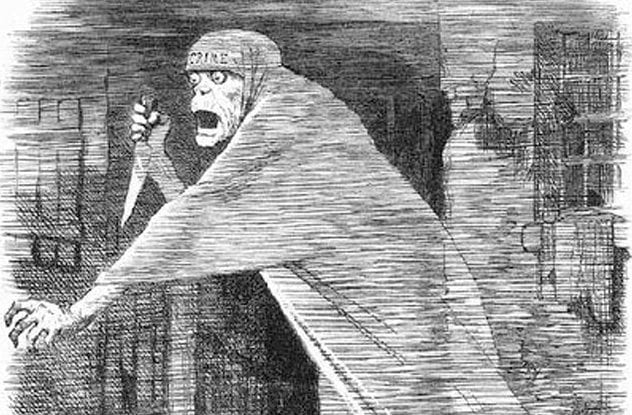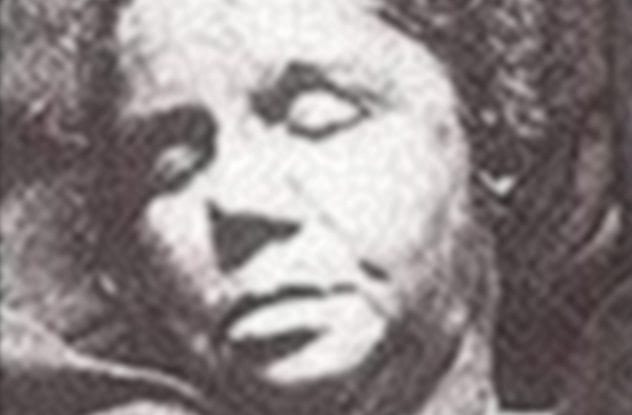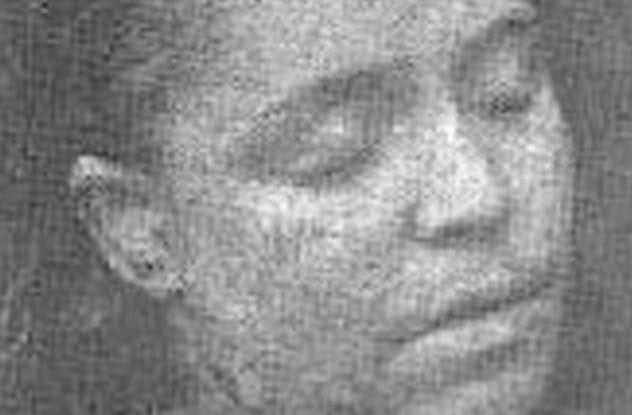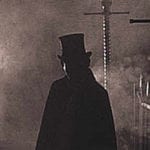 Miscellaneous
Miscellaneous  Miscellaneous
Miscellaneous  Creepy
Creepy 10 Shocking Tales of Bodies Found in Abandoned Houses
 Politics
Politics Top 10 Surprising Facts from the Life of Jimmy Carter
 Sport
Sport 10 Popular but Terrible Goalkeepers
 Technology
Technology The 10 Most Compelling Aircraft That Didn’t Succeed
 Movies and TV
Movies and TV 10 Ridiculous Riffs on Robin Hood
 Technology
Technology 10 Extreme Structures We Might See in the Future
 Miscellaneous
Miscellaneous 10 Catastrophic Translation Fails in History
 History
History 10 Wild Facts About the Mutiny on the HMS Wager
 Our World
Our World 10 Secrets Places You Won’t Believe
 Miscellaneous
Miscellaneous 10 Fascinating Origins of New Year’s Eve Superstitions
 Creepy
Creepy 10 Shocking Tales of Bodies Found in Abandoned Houses
 Politics
Politics Top 10 Surprising Facts from the Life of Jimmy Carter
Who's Behind Listverse?

Jamie Frater
Head Editor
Jamie founded Listverse due to an insatiable desire to share fascinating, obscure, and bizarre facts. He has been a guest speaker on numerous national radio and television stations and is a five time published author.
More About Us Sport
Sport 10 Popular but Terrible Goalkeepers
 Technology
Technology The 10 Most Compelling Aircraft That Didn’t Succeed
 Movies and TV
Movies and TV 10 Ridiculous Riffs on Robin Hood
 Technology
Technology 10 Extreme Structures We Might See in the Future
 Miscellaneous
Miscellaneous 10 Catastrophic Translation Fails in History
 History
History 10 Wild Facts About the Mutiny on the HMS Wager
 Our World
Our World 10 Secrets Places You Won’t Believe
10 Little-Known Murders Attributed To Jack The Ripper
Perhaps the reason for Jack the Ripper’s continued hold on our imagination is how little we truly know about him. That lets us apply our own personal biases and mindsets to identify the killer or motives. Was he a poor Eastern European immigrant? An aristocrat amusing himself with human prey? A sex maniac, perhaps driven insane by impotence?
We still don’t know exactly which of the many murder victims in the time and area were killed by the Ripper. The so-called canonical five victims (Mary Ann Nichols, Annie Chapman, Elizabeth Stride, Catherine Eddowes, and Mary Jane Kelly) are identified by the very similar types of attacks, but were there starter crimes before the killer established that pattern?
10The Rainham Murder Victim

In the summer of 1887, several body parts were found in the Thames River in Rainham, a rural town more than 10 miles from London. The torso of an unknown woman in her mid-to-late twenties was found in a package in the river in May. The head, legs, and arms had all been cut off, though the victim’s thigh later surfaced in another package.
This crime wasn’t associated with the Ripper murders until two years later, when other bodies in packages appeared in the Thames. Some suspect that this woman and others whose body parts were found in the river had died during illegal abortions, and that the abortionists dismembered them not only to more easily dispose of the bodies but to hide any evidence of the abortion or their identity.
9Annie Millwood

On February 25, 1888, Annie Millwood came to the Whitechapel Workhouse Infirmary. The 38-year-old widow had been attacked by a stranger with a knife and was stabbed in the belly and legs multiple times.
It took her almost a month to recover fully from her injuries, and she was released on March 21. She died a week later from a ruptured pulmonary artery. While the stress of the attack might have exacerbated an existing condition, it was not the direct cause of death.
8Ada Wilson

Ada Wilson, a seamstress who sometimes also worked as a prostitute, was attacked early in the morning on March 28, 1888. She reported that just as she was going to bed, she went to answer a knock at the door. When she opened it, a man on the doorstep demanded money. He drew a knife when she refused and stabbed her twice in the throat.
A witness saw the man leave and alerted two police constables, who searched but didn’t find him.
7Emma Elizabeth Smith

Smith, a frequent prostitute, was soliciting customers early in the morning of April 3, 1888. She saw a group of three men who looked suspicious and crossed the street to avoid them, but they followed, robbed, beat, and raped her.
She told the keeper of her lodging house that she was suffering from internal pains, and the keeper took her to the London Hospital. She had severe internal injuries and died of peritonitis the next day.
6Martha Tabram

Tabram, a mother of two, was separated from her husband and supported herself by selling small convenience items, such as matches and key rings, on the street. It was a precarious living, especially because she was an alcoholic, and she sometimes supplemented it with prostitution. She was found stabbed almost 40 times, probably with something like a pen knife on the morning of August 7.
During the night, several people had heard screams and shouts for the police, but this was nothing that unusual in Whitechapel. The autopsy, though, indicated that Tabram hadn’t had a chance to call for help. Because of the unprecedented brutality of this murder, it drew more attention than the earlier ones, and the press attacked the police for not being able to solve it.
5Jane Beadmore

At the time of her death, September 23, 1888, Beadmore’s murder was attributed by several newspapers to the Ripper, even though it took place in a small, fairly prosperous village of Birtly, in the rural north of England, and the victim was lower middle-class rather than poor. The murder method and mutilation of her body greatly resembled the Ripper’s killings. However, William Waddell, Beadmore’s estranged fiance, had uncharacteristically threatened to kill several of those around him in the days before her death.
He disappeared after the murder, and when he was found and arrested, he pleaded not guilty but later confessed, saying that he had been reading about the Whitechapel murders. While there’s no evidence that anybody other than Waddell was involved, at least the method suggests copycat elements.
4The Whitechapel Torso Murder

On September 11, 1888, workmen found a human arm in the Thames. It wasn’t in a package, but the upper part had string tied around it, suggesting that it might have previously been in one. A boy found another package in the street on September 28, also with an arm in it. More shockingly, on October 2, workmen building the site for New Scotland Yard found a woman’s torso in a package in the cellar. The woman had probably died of blood loss or shock, as far as they could tell, and the uterus was missing.
Ordinarily, the missing uterus would suggest that it was an abortionist trying to disguise the true cause of the woman’s death, but leaving the torso there was clearly a message of defiant contempt, as well as an indication that whoever left it there was familiar with the rather confusing layout for the new building. The police later found a leg and an arm but not the head or anything else that could help them identify the victim.
3Elizabeth Jackson

By the summer of 1889, it seemed as though the Ripper murders were over. However, in June, river workers and then the police found packages containing parts of a woman’s body. The victim had been about eight months pregnant, but the fetus as well as the uterus were missing.
She was later identified as Elizabeth Jackson from the clothing that she was wearing. Just days before the first body parts were found, the police received a letter, signed “Jack the Ripper,” saying “He is not dead but liveth,” and adding that he intended to begin his work again.
2Alice Mckenzie

McKenzie was found murdered and mutilated in the cul de sac of Castle Alley, Whitechapel, on July 17, 1889, in what was immediately suspected to be another of Jack the Ripper’s crimes. The police added new patrols and officers on guard.
The murder also brought public attention to the particularly decrepit state of the housing in Castle Alley, which lacked adequate ventilation. The authorities had long ago recommended that it be destroyed because of its unsanitary condition, but nobody had heeded that until McKenzie was found there. A year later, the cul de sac was opened up to allow more air to get through to the housing.
1Frances Coles

Coles’s murder, which occurred on February 13, 1891, is the only one for which a suspect was brought to trial. Her most recent off-again on-again boyfriend, James Sadler, was accused of the crime by the police and by several newspapers. But it was clear that there was only circumstantial evidence against him and some indications that the police were trying to pin the murder on him, and he was found not guilty.
Coles was still alive, with her throat cut, when she was found. She never regained consciousness.
+Elizabeth Sodo

Mrs. Elizabeth Sodo was a married woman of 50, suffering from what today would be diagnosed as depression and possibly obsessive-compulsive disorder. She and her husband lived in Whitechapel with their young son. She became obsessed with the case and was terrified that she would become the Ripper’s next victim.
She hanged herself on October 11, 1888, after the first three canonical murders.
Ann is a researcher, writer, and currently, a job hunter. Learn more or see more of her writing.








